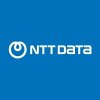
i
Synechron
Filter interviews by
Synechron QA Engineer Automation QA.Selenium Interview Questions and Answers
Synechron QA Engineer Automation QA.Selenium Interview Experiences
1 interview found
Interview Questionnaire
1 Question
- Q1. 1. Testng framework details 2. Difference btween string and stringbuilder 3. Current project framework details 4. POM
- Ans.
Questions related to TestNG, String and StringBuilder, current project framework details, and POM.
TestNG is a testing framework for Java
String is immutable while StringBuilder is mutable
Current project framework details depend on the project
POM is a design pattern for creating object repositories
Skills evaluated in this interview
Top trending discussions






Interview questions from similar companies

Mine sweeper logic for a box click
(1 Question)
- Q1. JavaScript objects
(1 Question)
- Q1. Delete element from linked list
- Ans.
To delete an element from a linked list, update the pointers of the previous node to skip the node to be deleted.
Traverse the linked list to find the node to be deleted
Update the 'next' pointer of the previous node to skip the node to be deleted
Free the memory allocated to the node to be deleted
(1 Question)
- Q1. Expected salary
- Ans.
I expect a competitive salary that reflects my skills, experience, and the industry standards for a Senior Software Engineer.
Research industry standards: For example, Glassdoor or Payscale can provide insights into average salaries for similar roles.
Consider my experience: With over 5 years in software development and expertise in multiple programming languages, I bring significant value.
Location matters: Salaries can ...
Skills evaluated in this interview

I applied via LinkedIn and was interviewed in Jul 2020. There was 1 interview round.
Interview Questionnaire
1 Question
- Q1. I was asked lot of technical questions
Interview Preparation Tips

Senior Software Engineer Interview Questions & Answers
Optum Global Solutionsposted on 26 Feb 2021
I applied via Company Website and was interviewed before Feb 2020. There were 4 interview rounds.
Interview Questionnaire
4 Questions
- Q1. .Net support related questions for example 1. What to do when applicable is down. 2. how to check IIS error logs.
- Q2. Explain Projects you worked and your role in those.
- Q3. Explain scenario when you handled high pressure from client.
- Ans.
Handled high pressure from client by prioritizing tasks and communicating effectively.
Identified critical issues and addressed them first
Communicated regularly with the client to provide updates and manage expectations
Collaborated with team members to delegate tasks and ensure timely delivery
Maintained a calm and professional demeanor to avoid escalating the situation
- Q4. Explain release management.
- Ans.
Release management is the process of planning, scheduling, coordinating, and deploying software releases.
It involves identifying the scope of the release and the features to be included
Creating a release plan and schedule
Coordinating with different teams involved in the release process
Testing the release to ensure it meets quality standards
Deploying the release to production
Monitoring the release to ensure it is stable...
Interview Preparation Tips
Skills evaluated in this interview

Software Developer Interview Questions & Answers
Virtusa Consulting Servicesposted on 2 Jun 2022
I appeared for an interview before Jun 2021.
Had DSA and aptitude questions
(1 Question)
- Q1. DSA a questions, Database Questions
(1 Question)
- Q1. 5 min question and answers about company
Interview Preparation Tips

I applied via Campus Placement and was interviewed before Jan 2021. There were 4 interview rounds.
Interview Questionnaire
1 Question
- Q1. Knowledge of C language and JAVA
Interview Preparation Tips

Software Engineer Interview Questions & Answers
Virtusa Consulting Servicesposted on 7 May 2022
I applied via Campus Placement and was interviewed before May 2021. There were 2 interview rounds.
Basic aptitude knowledge
Strong in java
Interview Preparation Tips

I applied via Naukri.com and was interviewed before Sep 2019. There were 6 interview rounds.
Interview Questionnaire
3 Questions
- Q1. IQ Test
- Q2. Machine Test
- Q3. Face To Face
Interview Preparation Tips
1. IQ Test
2. Machine Test
3. Face to Face
IQ Test is not so tough but prepare well Machine Test
Machine Test Question are like :-
Q.1 - We declare a variable in C++ like "is_this_a_variable" and in Java like "IsThisAVariable". There is underscore in between every word and first alphabet of every word is in lowercase in C++ and in Java first alphabet is in capital without underscore. Create a program in which if user input a string in a C++ variable format it will convert the input in java variable format.
Q2. Count the frequency of a string.
user input string - pqhphi
output-
p - 2
q - 1
h - 2
i - 1
Be strong in algorithms and data structure.

Software Developer Interview Questions & Answers
Virtusa Consulting Servicesposted on 15 Sep 2021
I appeared for an interview before Sep 2020.
(2 Questions)
Round duration - 90 minutes
Round difficulty - Easy
It happens in very friendly manner.
- Q1.
Paths in a Matrix Problem Statement
Given an 'M x N' matrix, print all the possible paths from the top-left corner to the bottom-right corner. You can only move either right (from (i,j) to (i,j+1)) or dow...
- Ans.
Print all possible paths from top-left to bottom-right in a matrix by moving only right or down.
Use backtracking to explore all possible paths from top-left to bottom-right in the matrix.
At each cell, recursively explore moving right and down until reaching the bottom-right corner.
Keep track of the current path and add it to the result when reaching the destination.
- Q2. Can you create 2 tables in SQL and perform different operations on them?
- Ans.
Yes, I can create 2 tables in SQL and perform operations like INSERT, SELECT, UPDATE, and DELETE.
Create Table 1: CREATE TABLE employees (id INT, name VARCHAR(50), salary DECIMAL(10,2));
Create Table 2: CREATE TABLE departments (dept_id INT, dept_name VARCHAR(50));
Insert Data: INSERT INTO employees VALUES (1, 'John Doe', 50000);
Select Data: SELECT * FROM employees WHERE salary > 40000;
Update Data: UPDATE employees SET...
Round duration - 90 minutes
Round difficulty - Medium
No problem occur very friendly environment.
(1 Question)
Round duration - 90 minutes
Round difficulty - Hard
- Q1.
Rat in a Maze Problem Statement
You need to determine all possible paths for a rat starting at position (0, 0) in a square maze to reach its destination at (N-1, N-1). The maze is represented as an N*N ma...
- Ans.
Find all possible paths for a rat in a maze from source to destination.
Use backtracking to explore all possible paths in the maze.
Keep track of visited cells to avoid revisiting them.
Explore all possible directions (up, down, left, right) from each cell.
Add the current direction to the path and recursively explore further.
If the destination is reached, add the path to the list of valid paths.
Interview Preparation Tips
Tip 1 : Competitive programming plays a major role when you are appearing for coding rounds as a fresher. In the coding rounds, you won't get direct problems copied from Geeksforgeeks or Leetcode. You would be required to use your logical thinking to go ahead in the process. This is where competitive programming helps.
Tip 2 : Coding rounds are all about Coding + Timing. Most people fail to excel due to the pressure of a timer ticking on your head. So, instead of just solving problems, try to participate in timed contests. This will help you be used to the pressure of the timer.
Tip 3 : Many big companies like Microsoft, Amazon, and even Google expect you to be good at standard problems. So, once you are done with coding round by your logical skills and competitive programming, you must be well versed with some standard problems in order to excel.
Application resume tips for other job seekersTip 1 : Make it short, crisp, and simple. It is always good to have a 1 pager resume.
Tip 2 : Resume must comprise of the following: Educational Qualifications, Technical skills, Projects, Work experience (if any), Achievements. Other than this, you may include some extra co-curricular achievements.
Skills evaluated in this interview

Interview Questionnaire
6 Questions
- Q1. Tell me about your project
- Ans.
Developed a web-based project management tool for a startup
Used React for the frontend and Node.js for the backend
Implemented user authentication and authorization using JWT
Integrated with third-party APIs such as Trello and Slack
Implemented real-time updates using WebSockets
Deployed on AWS using EC2 and RDS
- Q2. Write the idea or algorithm for d program of fibonacci series
- Q3. One question from your subject
- Q4. Introduce yourself
- Ans.
I am a software engineer with experience in developing web applications and mobile apps.
Proficient in programming languages such as Java, Python, and JavaScript
Skilled in using frameworks like React, Angular, and Spring Boot
Experienced in working with databases such as MySQL and MongoDB
Familiar with Agile development methodologies and DevOps practices
- Q5. If I give you a box full of pencils..in how many ways can you use it
- Q6. Do you have any question for me
Interview Preparation Tips
Experience: Time management is very important to clear the aptitude test. Besides this a lot of practice is also very important. This round is the major filteration round. Though each round is a major filteration round cuz NTT DATA is not a bulk recruiter like cts, infy etc. Almost 2-3 thousand students were there for this round from 6 different colleges and only 100 of them were selected.
Tips: Its better to start with the preparation from before and do consider the previous year placement papers available at indiabix. You can practice more n more. Apart from this you can go through the r.s aggarwal aptitude book also.
Round: Group Discussion
Experience: There were many panels and each panel had 10-12 students. The H.r first decided some other topic but when he asked wether everybody is aware of the topic ..there were few who didn't know about it. .so he picked up another topic. Fortunately he asked me to start with the discussion. Always try to be the one to break the ice.
Tips: The only key to crack this round is that yku should talk. You should definitely not confuse gd with debate. You should not argue or by any chance shouldn't sound arrogant.
Round: Technical Interview
Experience: They will definitely ask about your project so be thorough with that. Ntt data is a Japanese company . Though this is IT but it will ask from the subject of your own choice from people those who have a non IT background. After you get shortlisted in d gd they will give you a form to fill. Do fill that form without fail. If it is blank then even if u go to the hr round he will reject you.
Tips: Just be confident and always smile. Be careful on what you write in your resume cuz they can ask about anything based on your resume.
Round: HR Interview
Experience: This round was a cake walk. Just be confident and updated about the company. Do ask him a question if he asks you to do that.but make sure it shouldn't be vague or out of the picture.
Tips: Keep smiling and don't get nervous. If they ask you about location preferences, dun get firm at one place.try to be flexible.
General Tips: Donot loose hope at any cost. You never know when your moment is going to arrive. Do practice the aptitude as much as you can. Finally NTT DATA selected only 50 overall in wch 11 were from my college n i was lucky to be one of them. the offer letter was issued the same day and we were all venerated. Its just a game of confidence. All the best
Skill Tips: Try to add some co curricular activities and justify your role.
Skills: communication, technical knowledge, management skills, leadership
College Name: SATHYABAMA UNIVERSITY
Motivation: You will find the it companies mostly head quartered in U.S but this company is in Japan. Plus you have better opportunity and growth compared to other companies cuz its not a bulk recruiter.
Skills evaluated in this interview
Tell us how to improve this page.
Synechron Interviews By Designations
- Synechron Senior Associate Interview Questions
- Synechron Technical Lead Interview Questions
- Synechron Senior Software Engineer Interview Questions
- Synechron Business Analyst Interview Questions
- Synechron Senior Associate Technology L1 Interview Questions
- Synechron Software Developer Interview Questions
- Synechron Automation Test Engineer Interview Questions
- Synechron Associate Technology Interview Questions
- Show more
Interview Questions from Similar Companies
|
Technical Lead
2.9k
salaries
| ₹19.8 L/yr - ₹35 L/yr |
|
Senior Associate
2k
salaries
| ₹14.4 L/yr - ₹25.7 L/yr |
|
Senior Software Engineer
1.6k
salaries
| ₹10.5 L/yr - ₹28.3 L/yr |
|
Senior Associate Technology L1
1k
salaries
| ₹14 L/yr - ₹24.5 L/yr |
|
Associate Specialist
856
salaries
| ₹22 L/yr - ₹38 L/yr |

DXC Technology

Sutherland Global Services

Optum Global Solutions

Virtusa Consulting Services
- Home >
- Interviews >
- Synechron Interview Questions










